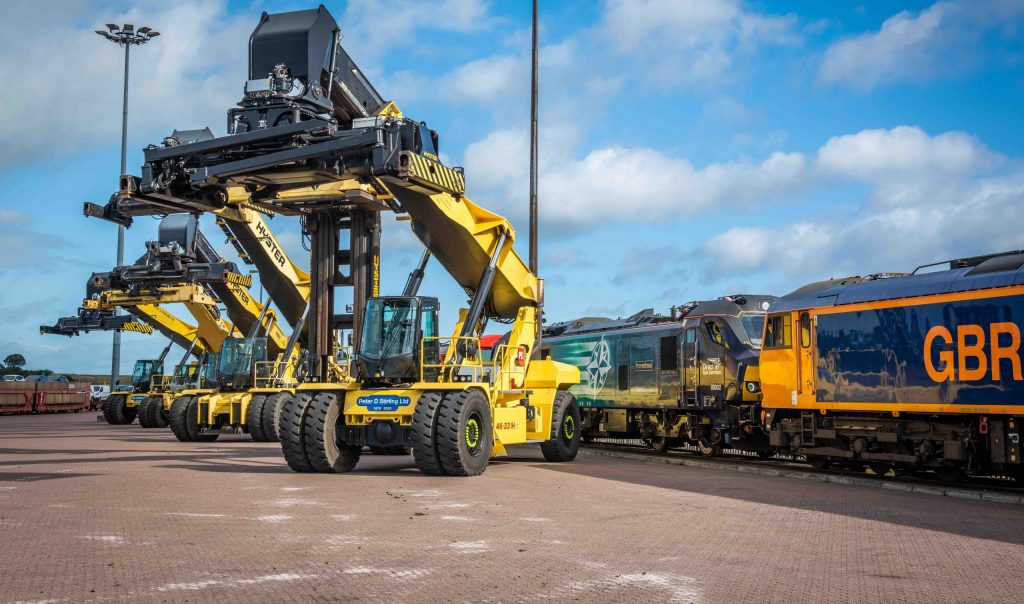Mossend International Railfreight Park (MIRP) is a zero-carbon development that sets the standard for sustainable logistics.
It realises the potential of a strategically located existing site to create an integrated, all-electric, zero-carbon rail freight terminal and logistics operation.
Environmental
Promoting a low-carbon economy
As a catalyst for a modal shift from road to rail, it will support economic competitiveness by reducing transport costs for zero-carbon logistics and distribution. The all-electric terminal has the capacity to save over 200,000 tonnes of carbon per annum, supporting Scotland’s transition to a zero-carbon economy.
Green network
Major areas of the site will be retained as quality green space, providing woodland, walking paths and cycle routes for the local community. Approximately 50,000 trees will be planted and the entire space will actively promote biodiversity.
Sustainable transport
MIRP will enable some of the 11,000 long-distance Anglo-Scottish HGV movements per day to be diverted from the motorway and trunk road network onto rail. It will have the capacity to cater for over 16 million tonnes of goods per annum.
In addition, long-distance trains will be hauled by electric traction or hybrid locomotives, and the shunting at the park will be undertaken by battery-powered locomotives initially, with hydrogen options also being explored.
Fully laden containers from a 775-metre international standard train can be moved by electric tug vehicles directly to the distribution centre on the internal private road network, reducing disruption and negating the need to separate out cargo for travel on roads, which must be 30 per cent lighter. Each train typically takes 90 lorry journeys off the road.
Sustainable development
- Ecology and nature conservation – the creation of a green network for the local community, promoting biodiversity
- Noise and vibration mitigation measures
- Sustainable and improved drainage systems on the site
- Power sourced wherever possible from green and renewable energy providers
- A new access road link from MIRP onto the A8 to remove HGV traffic from the local road network within Bellshill, improving the safety and environment for residents
MIRP supports the local economy
It will create a lasting legacy for North Lanarkshire and Scotland as well as the wider UK economy. The £260 million development represents one of the largest single public-private sector investments in Scotland, which supports inclusive economic growth for the local and regional communities.
Businesses using the park will benefit from access to zero-carbon supply chain logistics, significant cost saving opportunities, increased efficiency, and reliability, compared to long-haul road transport.
Locally, a highly trained and skilled workforce will have access to 4,900 jobs during the construction and operational phase, promoting diversity and equality, and generating salaries of approximately £100 million. Highly skilled apprentices will make up a significant part of the workforce.
Benefits for the community
The existing Mossend railhead has been in operation in North Lanarkshire for over 40 years. It is owned and operated by Peter D. Stirling Limited (PDS), founded in 1870, working with local suppliers and partners.
Now established as a key node within Scotland’s freight network, PDS is now realising a once-in-a-generation opportunity to revolutionise sustainable logistics in Scotland.
As well as benefiting the local economy, the scheme will also support the local community, providing a wide range of jobs alongside skills development and opportunities to establish training links with local colleges and training providers.
New apprenticeships are anticipated to make up a significant part of the workforce. Together with Briggs Equipment, we have already begun recruiting new apprentices from the local area.
The development itself aims to minimise impact on the community. Steps are being taken to remove all traffic from MIRP off the local road network and woodland and recreational space is being provided for use by local residents.



